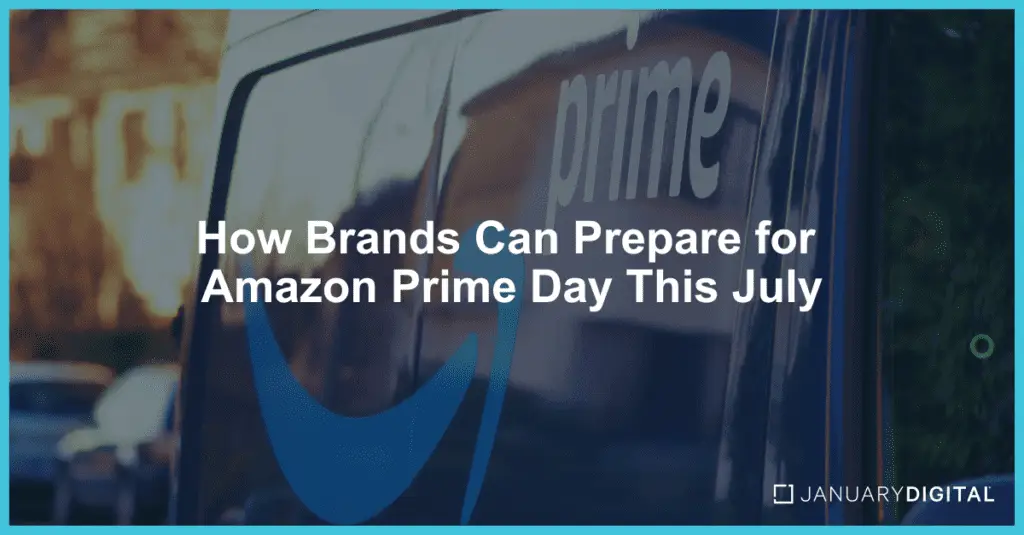
Amazon Prime Day is almost upon us, marking the retail giant’s 10th annual event. This year, Prime Day will span July 16th and 17th.
Prime Day 2023 was Amazon’s biggest event yet, with members purchasing over 375 million items¹ worldwide and driving $12.7 billion in sales². The first day alone set a record as Amazon’s largest sales day ever. Competing platforms like Temu have added pressure for Amazon sellers to offer deeper discounts to edge out the Chinese ecommerce site’s low prices. With heightened competition, last year’s performance and this year’s milestone, Prime Day 2024 is poised to be bigger than ever.
Prime Day is a significant week for both Amazon sellers and non-Amazon retailers, with millions of customers scouring the internet for deals. Here’s how brands can maximize the upcoming Prime Day:
For Amazon Sellers
- Evaluate your past Prime Day sales data to identify top-performing products, ensure you have ample inventory stocked for those high-demand items, and update your Amazon Storefront with the most accurate product information.
- Proactive planning and maintaining sufficient stock levels, especially for your historically best-selling products, will allow you to maximize sales during this major shopping event.
- Purchase intent is higher during the week of Amazon Prime Day and buying patterns are different than usual. People will be seeking deals from Amazon storefronts, and many Amazon retailers experience unprecedented traffic during this time.
- To effectively manage the demand surge and maximize earnings, sellers should optimize product listings with compelling copy and imagery prior to Prime Day along with bolstering customer service staffing to ensure a smooth experience for the influx of potential shoppers.
- Ramp up promotional activities before, during, and after Prime Day.
- To build awareness and drive excitement leading up to the event, tease upcoming Prime Day deals through advertising campaigns and organic posts.
- During Prime Day, be sure to drive paid promotions to your Amazon storefront versus your DTC site to maximize traffic and conversions.
- After Prime Day, continue promoting any extended sale periods or highlight top-selling items to sustain momentum.
- Use Prime Day data to prepare for future sales events in Q3 and Q4, such as Back to School, Labor Day, and Black Friday.
- Prime Day insights into customer demand, pricing trends, and top-selling product categories that can inform your strategy for subsequent major shopping periods.
- Analyze sales data, advertising performance, customer reviews/questions to identify areas for optimization. This data-driven approach allows you to stock the right inventory levels, plan promotions effectively, and refine listings for maximum conversions later in the year.
For Non-Amazon Retailers
- If you’re looking to capitalize on the increased purchase intent, offer discounts and seamless shopping experiences to attract customers.
- Retailers like Walmart, Target, Best Buy, and more have offered competing deals in previous years.
- Offer free shipping to loyal customers on your DTC site to match Amazon Prime shipping.
- You can also offer your loyal customers exclusive promotions to further incentivize this cohort.
- With competing promotions, capitalize on the halo effect and any incremental lift from Prime Day by increasing paid budgets, especially in search and affiliate channels.
- Scale back marketing efforts if unable to match Prime Day discounts and resume advertising post-Prime Day when competition and costs are lower.
- When there is increased demand, platform CPCs and CPMs tend to surge. For brands that are not offering competing discounts during Prime Day, pushing ads aggressively will yield lower returns at a higher cost. Scale back back marketing efforts in the days leading up to Prime Day and following the event until the demand subsides and costs normalize.
Prime Day’s impact extends beyond the two-day event, influencing consumer behavior before and after the sale. Businesses can leverage the increased traffic and high purchase intent to boost sales and gather valuable insights for future promotional strategies. Competition from emerging platforms like Temu and established retailers underscores the importance of strategic planning and adaptability.
Prepare for Prime Day 2024 to capitalize on this significant e-commerce event and drive growth for your business.


